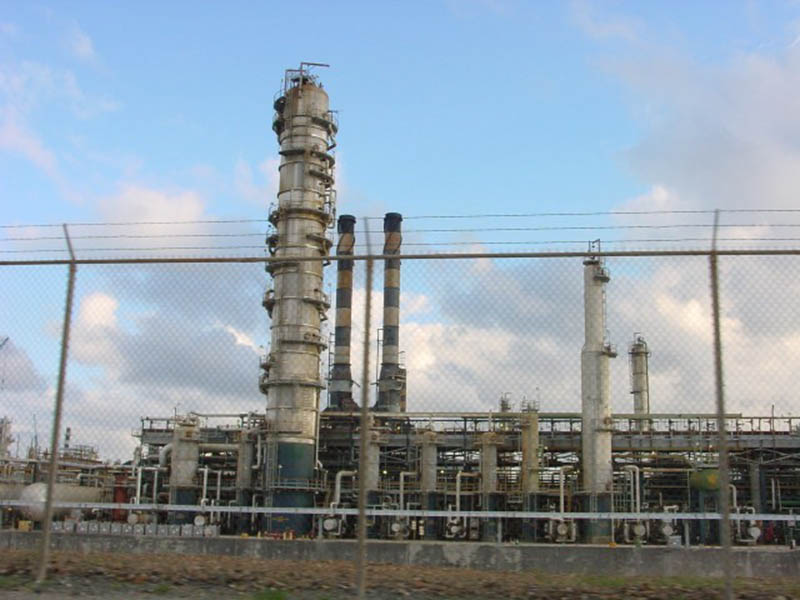A bankruptcy judge in Houston, Texas on Wednesday allowed a Hess Corp. subsidiary in the US Virgin Islands to stay in chapter 11 bankruptcy to resolve mass asbestos injury claims.
Residents of St Croix where Honx had owned a troubled refinery that had led to the asbestos claims had argued before Judge Marvin Isgur, of the Southern District of Texas bankruptcy court that the company had sought bankruptcy
protection in bad faith to shield itself from the claims. According to the Wall Street Journal the judge did not find favour with these arguments and allowed the Hess subsidiary, Honx to stay in bankruptcy.
Hess is one of the partners of ExxonMobil in Guyana’s lucrative offshore Stabroek Block and since oil extraction started in December of 2019, it has exulted over the enormous returns it has earned and will earn in the future. Its conduct in relation to claims on the Caribbean island of St Croix will likely raise concerns about its disposition in settling claims where its conduct has been called into question.
Even though Honx secured victory to enable the shelter of bankruptcy Hess may face further problems as the St Croix claimants now intend to sue the parent company over the asbestos claims linked to the refinery.
According to the stthomassource.com, the legal filing by the St Croix residents lists nearly 60 years of environmental and social ills allegedly caused by the refinery.
“The debtor did not file this case for its own protection,” wrote lawyers representing a committee of creditors seeking to get the bankruptcy dropped. “Instead, the debtor seeks to protect Hess. But Hess is not subject to the kind of financial distress that would justify even its own bankruptcy filing. To be sure, hundreds of plaintiffs in the USVI have valuable claims against Hess, including direct premises and supplier liability claims that are not derived from the debtor’s liability.”
The HONX bankruptcy, the creditors wrote, is protecting US$37 billion from potential exposure to the asbestos suits. The filing claimed Hess settled out of court approximately 1,100 asbestos suits over the last 23 years, the stthomassource.com said.
“Hess, like every other asbestos defendant in the USVI, has been terrified of having its liability determined by members of the community that it devastated through its … conduct — and no defendant has permitted an asbestos case to go to trial there,” the creditors wrote. “Every day that goes by in this case, and every day the USVI actions remain enjoined, Hess continues to generate millions in free cash flow, while asbestos claimants suffer, witness memories fade, and evidence grows stale. Like most defendants, Hess would prefer litigation and judgments years into the future to litigation and judgments right now.”
Hess ran the refinery on St. Croix’s south shore from 1965 to 1998, allegedly exposing a generation of Crucians to toxins in their workplace. Hess sold the refinery to Hovensa, which in turn sold it to Limetree Bay. Who exactly owns the massive refinery now has been a matter of debate since it was sold at a bankruptcy auction early this year, but Hamilton Refining and Transportation claims to be the sole owner, the stthomassource.com said.
Residents and would-be developers have called for the refinery to be permanently closed and dismantled. Some claim to have been sickened by fumes from the plant. Others have asked the Environmental Protection Agency to declare the sight hazardous and designate a superfund area. The EPA, however, has been hampered in its monitoring of such matters by recent U.S. Supreme Court rulings. In May 2021, oil spray from the plant covered homes downwind, the report said.
Reports of health issues were almost immediate, the filing by the claimants said.
“Not only did the Refinery contaminate the island’s water supply, but it also produced large amounts of emissions that negatively impacted the health of the island’s inhabitants. Beginning as early as the 1960s, St. Croix residents started complaining about these emissions from the refinery,” the court filing read.
In 1989 alone, the plant released 700,000 pounds of benzene, a carcinogen produced as a by-product of oil refining, the court filing said. Groundwater was poisoned with petroleum; liquefied petroleum gas, naphtha, diesel, and gas oil leaked, sickening school children; thousands of pounds of hydrocarbons and hydrogen sulfide leaked on at least three occasions, the court records claim.
The asbestos exposure was also there from the start, the court filing said.
“In addition to harmful external consequences to the environment, the operations of the refinery also exposed thousands of workers and their families to asbestos. The debtor’s Hess-hired Chief Administrative Officer asserts that the presence of asbestos at the Refinery was first publicly confirmed in 1982,” the court filing said, according to the report.





